604 Turbojet Minesweeper
In the early sixties, the Soviet army wished to obtain new specialized equipment capable of making large width passages in enemy minefields. Existing skating rinks, etc. the systems did not fully meet the updated requirements, because of which it was decided to create a completely new model of armored vehicles. October 25, 1961 the requirements of the military department were enshrined in a new resolution of the Council of Ministers of the USSR. In accordance with it, in the foreseeable future, the industry was supposed to introduce a self-propelled minesweeper, built on a serial medium chassis tank.
The development of a promising project was entrusted to the Omsk design bureau OKB-174. The chief designer was appointed A.A. Morov, lead designer - A.A. Lyakhov. In accordance with the existing system of designations of new projects, the prospective minesweeper received the working title “604 Object”. In addition, an additional name was suggested that indicated the purpose of the vehicle, “Turbojet mine sweeper” or TMT.
A promising engineering vehicle was to be built on the chassis of an average T-55 tank, which by then was well mastered by the army of the Soviet Union and was distinguished by rather high characteristics. From the existing chassis it was necessary to remove all unnecessary units, after which it was to receive two turbojet engines of the P11F-300 type. The engines were planned to be equipped with a special nozzle device, providing trawling and ejection of soil together with mines beyond the limits of the passage being made.
The proposed principle of operation for the TMT / 604 Object was quite simple. Driving through a minefield with the turbojet engines turned on, it had to send jet streams to the ground and literally blow it away with the installed mines. The power of the engines used, according to calculations, made it possible to get rid of both light anti-personnel and more heavy anti-tank mines. In contrast to the existing trackline trawls, the new engineering machine had to create continuous passages up to several meters wide, suitable for use by people and equipment.
Retrofitting an existing tank using additional jet engines was not in itself a challenge. More difficult was the question of creating a nozzle device capable of trawling across the entire width of the machine body and beyond. As far as is known, for this, at the early stage of the “604 Object” project, a prototype was designed and built with an experimental set of equipment.
As the preserved photos show, already at this stage some features of the layout of the future minesweeper were identified. So, turbojet engines were placed on the aft fenced shelves, for which corresponding restraining devices appeared on them and on the hull. Before the engines installed by the nozzle forward, metal boxes were placed, which are necessary for distributing the flow of reactive gases. The pilot project proposed the use of two pipes of rectangular section, extending from the boxes to the frontal part of the machine. At the front end of each pipe was a bell. In addition, an additional pipe of circular section passed along the left side of the hull. Its front part was located with a slope, because of which the gases leaving it had to blow the ground to the side.
Such a prototype was tested and confirmed the fundamental possibility of trawling mines using jet gas jets. At the same time, existing pipes and nozzle devices did not show the required work efficiency. Based on the test results, a new version of the project was created. It envisaged a significant processing of the systems for issuing hot gases. In addition, this time the "604 Object" was supposed to receive the protection of all new components and assemblies.
As a basis for the TMT vehicle, a serial medium tank T-55 was to be used. Special requirements for the new project led to the need for serious rework of existing equipment. First of all, the OKB-174 staff redesigned the armored corps. The tank was supposed to lose the tower and the upper part of the hull. Instead, a new project proposed the installation of a higher superstructure that can accommodate all the necessary units. With such an alteration, the appearance of the car was seriously changed.
"604 object" received a new front sheets of a modified form and a different thickness. Rolled armor plates with a thickness of 80 mm (upper) and 60 mm (lower) were placed at an angle 55 ° to the vertical. The bottom sheet was distinguished by an increased width and cutouts for mounting the units of the trawling system. The upper one was noticeably narrower and served as the front wall of the habitable compartment. With the frontal part of the board connected thickness 45 mm. The main part of the superstructure occupied about half the total length of the hull. Behind it, the height of the hull was reduced to its original values.
The most serious changes in the layout of the armored vehicle. The front compartment is now given under the placement of the office of management. The side and stern walls of the habitable volume were made of armor steel and equipped with thermal insulation. Under the management department and behind it were large tanks for the transportation of aviation fuel. Two tanks with a total volume of 1500 l were used. In addition, next to them were tanks of fuel intended for a tank engine. The aft hull compartment still housed the engine compartment.
On the sides of the habitable logging it was proposed to place special equipment. On each side, it was planned to install special polygonal-shaped armor casings necessary for the installation of turbojet engines. The housings consisted of sheets of thickness from 20 to 60 mm. For some reason, the side covers were divided into two parts. The aft units of the casings differed by a sloping rear cut, covered by a protective net. Between the engines and their protection remained a small empty space.
Being a modification of the serial medium tank, the turbojet minesweeper had to use the same propulsion system. In the aft compartment of the hull fit a B-54 diesel engine with 520 horsepower. With the help of a mechanical transmission, engine torque was delivered to the driving wheels of the aft layout. In connection with the movement of the driver's control post, the transmission control tools had to be modified.
The undercarriage of the “604 Object” was based on existing products, but had some characteristic features. On each side there were five large-diameter road wheels with an individual torsion suspension. Due to the changing loads on the chassis, the location of the rollers has been adjusted. Now the increased interval was present before the fifth rink, and not before the second one, like in the base tank. In front of the hull were sloths with tension mechanisms, in the stern - drive wheels.
Under the large onboard hulls, the minesweeper was supposed to carry two turbojet engines Р11Ф-300. This product was created in the mid-fifties to equip the newest fighter MiG-21. Subsequently, the engines of this family were installed on some other domestic and foreign aircraft. The engine had a length of 4,61 m and a maximum diameter of 825 mm. Dry weight of the product - 1120 kg. The maximum thrust of the engine reached 3880 kgf, while using an afterburner - 6120 kgf.
Aviation the engine was proposed to be mounted on the side of the inhabited cabin “backwards”. Its compressor was supposed to be inside the rear side casing, while the front contained the combustion chamber, turbine and afterburner. This method of installing the engine necessitated the use of thermal insulation of the control compartment. An original design nozzle device was paired with a regular engine nozzle. Leaving the engine, the gases fell into a tunnel pipe close to a rectangular section. Such a pipe came out of the lower part of the casing and was placed on a fenestrated shelf. The pipe bent over the wing of the caterpillar, and its front cut turned out to be above the ground.
To ensure the operation of jet engines, the TMT machine had on board two tanks for 1500 l aviation fuel. In the same compartment with them were located tanks for diesel fuel consumed by the main engine. In connection with the existing risks on the battlefield, it was decided to equip the armored vehicle with two fire extinguishing systems at once. The first was borrowed from the T-55 tank and was responsible for the safety of the engine compartment. The task of the second was the fight against fires in the fuel compartment. Interestingly, when developing this system, components of aviation fire extinguishing agents were used in the most active way.
The 604 Object was controlled by a two-person crew: a driver and a commander-operator. The crew was located in the manned compartment cabin hull. The driver’s seat was at the left side of the compartment, the commander’s place was at the right. Both crew members had their own hatches in the hull roof. On the hatches mounted viewing devices. Commander hatch, in addition, was equipped with a searchlight. When trawling, virtually eliminating observation of the terrain, the driver had to withstand a given direction with the help of the gyro-semi-compass GIC-48. The crew had two radio stations.
Perspective engineering machine should not have its own weapon. At the same time, the crew had some means of self-defense. In the event of engagement, it was proposed to store two AK guns with several shops, 12 hand grenades and a signal pistol with ammunition in the habitable compartments.
In the stern of the hull placed a device for marking the passage. While the car was driving through a minefield, it was supposed to dump pyrotechnic marks on the ground. Observing the fire and smoke from the discharged items, the advancing troops could determine the direction of movement and the safe zone cleared of explosive devices.
Despite a significant change in the hull design, the abandonment of the turret and the installation of new units, the minesweeper in its dimensions should not have been significantly different from the T-55 tank. At the same time, however, it was significantly longer due to front nozzle devices and aft parts of engine covers. The combat weight of the vehicle was determined at the level of 37 t. Some reduction in power density should not have a negative impact on mobility. The “604 Object” could reach a highway speed up to 45-50 km / h; on rough terrain, the speed was halved. The fuel range did not exceed 190 km.
By the middle of 1963, OKB-174 completed the creation of a new project, after which construction began on an experienced minesweeper. For testing this car was sent in the fourth quarter of the same year. Soon, the driving characteristics of a turbojet minesweeper were checked, after which tests of a new special equipment started. Sea trials showed that the mobility of the engineering armored vehicle remained at the level of the base medium tank. In all conditions, she could work in some combat formations with other armored vehicles.
The principle of trawling with the help of new equipment was quite simple. Having approached the mine-explosive barrier, the crew had to set up a “combat course”, turn on turbojet engines, and also put the marking tools into working condition. After that, it was possible to advance to the minefield and make a passage.
Two engines created traction up to 6120 kgf each. The flow of jet gases using nozzle devices was directed to the ground with mines installed in it. The speed and volume of the gas flow had the most serious impact on the ground in front of the minesweeper. Gases literally tore and blew away the topsoil. When working on soils with turf covering, a trench was made to a depth of 500 mm. Trawling in the snow allowed to go deeper into the 600 mm. Two nozzle devices mounted on the sides of the hull were designed and removed to the sides of the ground in a section not less than 4 m wide. Under the influence of reactive gases, soil particles scattered forward and to the sides. Together with them, the stream extracted from the ground and threw mines of any type. When making a pass in a minefield, the “604 Object” was supposed to move at a speed of about 3-4 km / h.
Obviously, after successful testing of the prototype TMT / “604 Object”, which confirmed the viability of the original trawling principle, it was decided to develop another similar machine. This time, the specialists of the OKB-174 created a turbojet minesweeper based on the self-propelled artillery installation ISU-152K. The machine with the working designation "Object 606" received an updated body with a reduced thickness of frontal armor protection. On the sides of the habitable logging, there were engines and other special equipment borrowed from the 604 Object project. The new version of the minesweeper weighed 47 t and, in terms of its mobility characteristics, it hardly differed from the base ACS.
Any information about the construction and testing of the minesweeper "Object 606" is missing. It is possible that this project remained on paper, not even reaching the stage of construction of a prototype.
The prototype of the TMT / 604 Object Turbojet Minesweeper has been tested and demonstrated its capabilities, confirming the ability to make large passages in any explosive mine obstacles. However, the car was not recommended for adoption. Apparently, the main reason for the rejection of the interesting sample by the military was not the best economic indicators. With all its advantages, the original minesweeper had limited combat characteristics, and besides, it turned out to be quite expensive to operate.
The main problems of TMT were associated with the selected method of trawling. On board the car were two P11F-300 turbojet engines, each of which had a specific fuel consumption of 0,94 kg / kgf / h in cruising mode and 2,35 kg / kgf / h in afterburner. Thus, for an hour of work in the cruising mode, each engine had to consume more than 3,6 tons of fuel. When switching to afterburner, hourly fuel consumption exceeded 15 t for each of the two engines. However, in two fuel tanks with a total capacity of 1500 l it was possible to pour about 1150 kg of kerosene.
It is easy to calculate that the available supply of aviation fuel would be enough for trawling with a duration of about 10 minutes during cruise operation of the engines, and switching on the afterburner would shorten this period several times. Thus, even with fuel economy, an “604 Object” at one gas station could make a passage no longer than 600-700 m, after which it needed to be refueled. It is unlikely that an armored vehicle with such capabilities could provide a full-fledged attack of troops on a dangerous area.
The problem of insufficient “stroke range” during trawling could be solved in two ways: using a more economical engine or increasing the capacity of kerosene tanks. Apparently, the ability to use other aircraft engines were absent. The increase in fuel reserves, in turn, was due to the need for a serious re-arrangement of the internal volumes of the hull. Thus, there were simply no real possibilities to improve the performance of the “604 Object” to acceptable values.
Insufficient performance and the inability to increase them led to a natural result. Not later than 1964-65, the TMT / 604 Object project was closed. The same fate befell a similar development based on self-propelled guns ISU-152K. Using a different chassis did not affect the basic characteristics of the machine, and the correction of the main flaws was impossible. After the project was closed, the built prototypes of the turbojet minesweeper were disassembled as superfluous. This technique could be used in certain new projects as experimental machines.
The most interesting engineering machine could not show the required characteristics and therefore did not enter service. In addition, she demonstrated that with the current level of technology development, turbojets do not have practical use. The original idea was abandoned and never returned to it over the next few decades. About the unusual method of trawling remembered only during the war in Afghanistan. Then on the basis of serial equipment and using common components was created the so-called. gas-dynamic minesweeper "Progrev-T". However, this machine failed to become mass.
Based on:
http://armor.kiev.ua/
http://russianarms.ru/
http://477768.livejournal.com/
Solyankin A. G., Pavlov M. V., Pavlov I. V., Zheltov I. G. Domestic armored vehicles. XX century. - M .: Exprint, 2010. - T. 3. 1946 – 1965
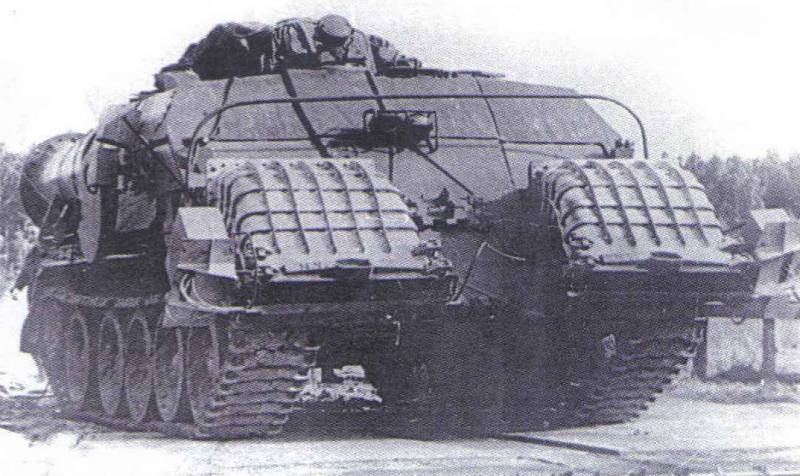
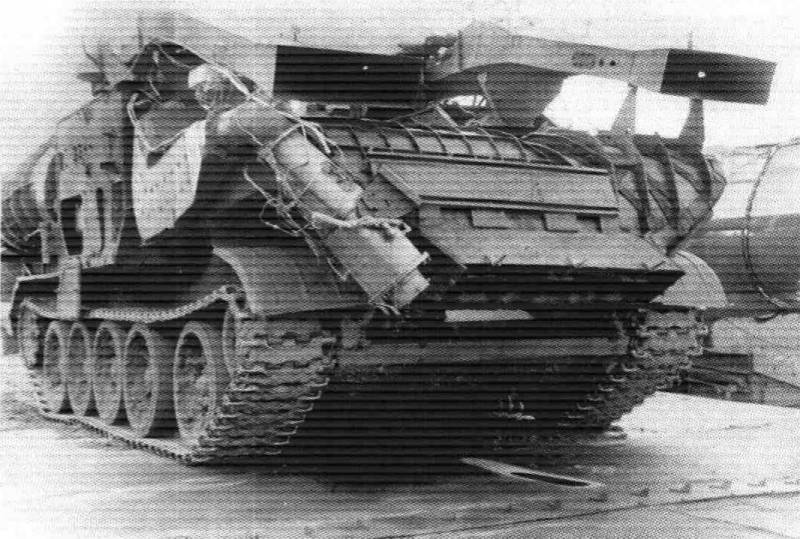
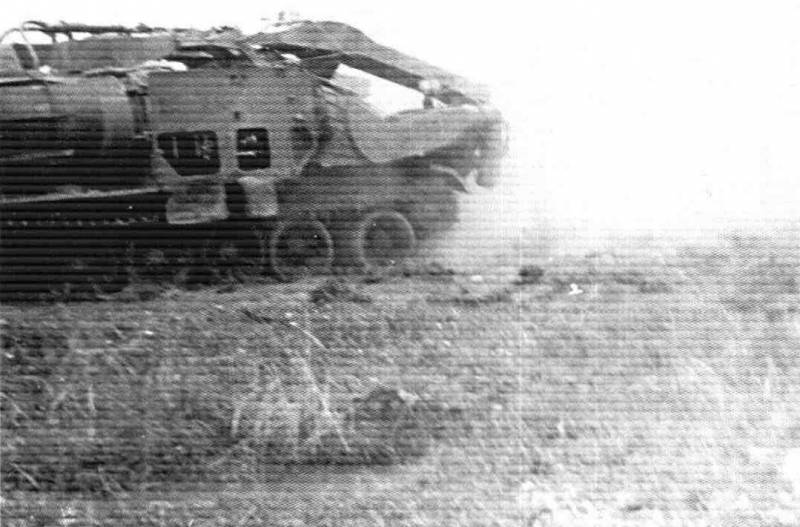
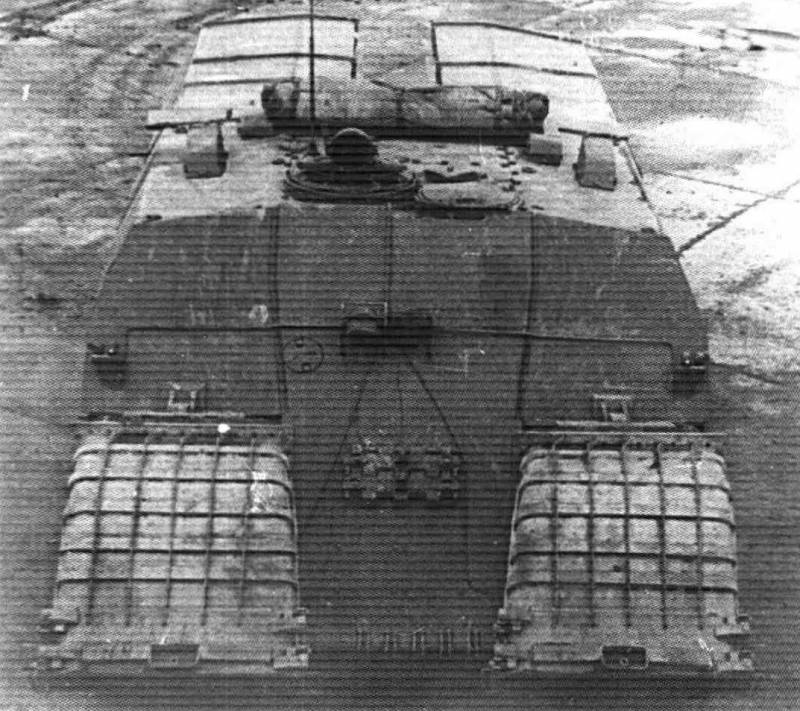
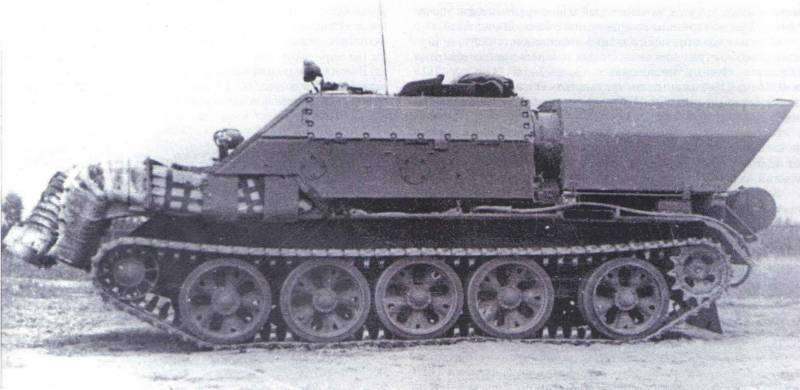
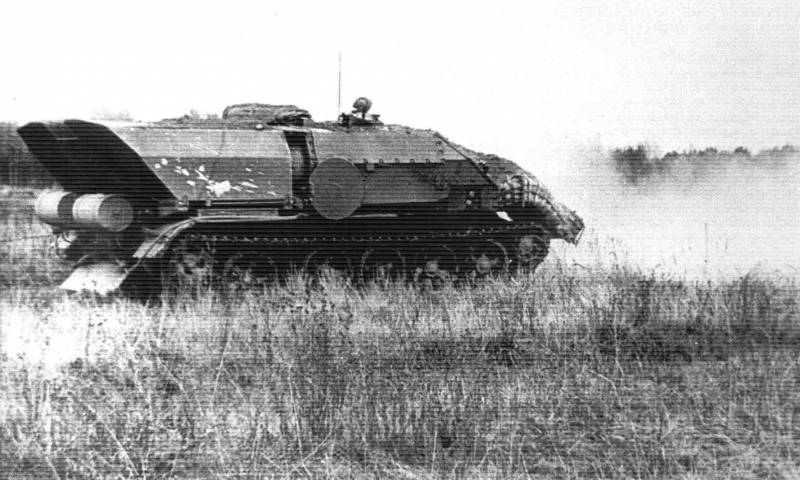
Information